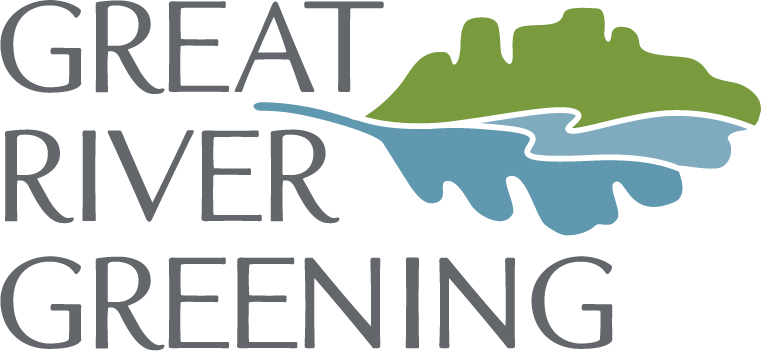From Soil to Stream: How Restoring Land Protects Water
11/19/2024
Minnesotans cherish their water. We proudly boast that our state has more water than any other, with 6% of the state covered by water. This includes over 11,000 lakes, 69,000 miles of rivers and streams, and more than 10.6 million acres of wetlands. And let’s not forget that we are home to the headwaters of the Mississippi River and the Boundary Waters Canoe Area Wilderness!
However, this precious resource faces growing challenges from pollution, “forever chemicals” (PFAS), and runoff from urban and agricultural sources.
We’re Taking Action
The good news is that we are tackling these issues head-on. Great River Greening is leading efforts to restore and sustainably manage land throughout Minnesota, resulting in improved water quality, storage, and flow.
Here are just a few examples that highlight the power of our land restoration efforts to impact water quality and flow:
Trout Brook, Afton
Trout Brook Remeander
Trout Brook, a cold-water stream that flows through Afton State Park and Afton Alps Ski Area, was severely impacted by 19th-century logging. These practices caused erosion and excess sediment to flow into Lake St. Croix, significantly degrading water quality. Great River Greening led a three-phase restoration project to restore the stream’s natural meanders, enhance habitats and replace culverts to restore shoreline, water flow and fish migration. Read the full report.
Continuous Living Cover Crops:
Kernza field, Nicollet County
This past year, Great River Greening partnered with farmers to support the addition of regenerative agriculture practices, including planting continuous living cover crops (CLCs) like winter camelina and perennial wheatgrass (Kernza) on thousands of acres. By keeping the soil covered year-round, these crops reduce runoff, filter water, and improve water storage in the soil, making them a key strategy for protecting water quality and enhancing drought resilience.
"Healthy land is the foundation of clean water—plants filter pollutants, manage runoff, and ensure sustainable, clean water, protecting habitats and creating a more resilient environment for future generations."
-- Brad Gordon, Ph.D., Associate Conservation Director, Great River Greening.
A Collective Effort
This work is made possible through collaboration. We are grateful to have such dedicated partners—like the Pentair Foundation, Ecolab, the Minnesota Twins, and the thousands of people who donate and volunteer. Together, we’re protecting Minnesota’s water resources through land restoration.
Here are just a few examples of these vital collaborations:
At Pillager Point (Cass County), we transformed a former city dump into a native prairie that now filters runoff before it reaches the Crow Wing River, a vital tributary of the Mississippi River and a main source of drinking water for thousands of people. This project was in partnership with the Pentair Foundation.
Our land restoration efforts improve both water quality and water storage, which are vital during floods and droughts. Native plants with deep roots absorb excess water during floods and access groundwater during droughts, helping to protect water resources. Thanks to operational support from Ecolab, we continue to restore land across the state.
Our journey began in 1995 with a project called "Greening the Great River" to revitalize the Mississippi Riverfront in St. Paul. Support from partners like the Minnesota Twins has helped expand our efforts statewide, making a lasting impact on water quality across Minnesota.
Together, We Can Make a Difference
We believe it’s the collective commitment from businesses, local governments, communities and individuals that can make a lasting difference. If you love Minnesota’s outdoors as much as we do, let’s keep working together to protect the water we all rely on. Please support our efforts to improve water quality by making a donation during Give to the Max Week!
Photo credit: Mississippi River bank at Hidden Falls Regional Park (Becca Tucker)



